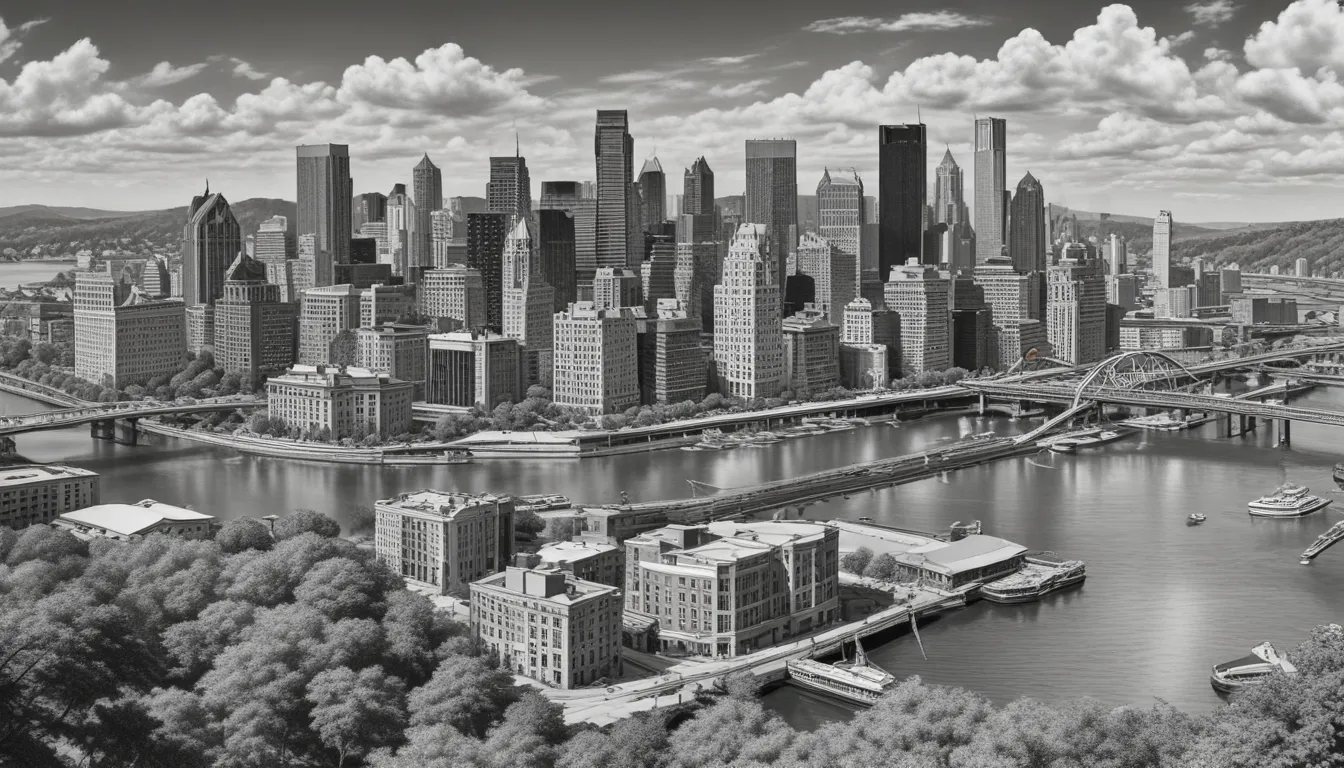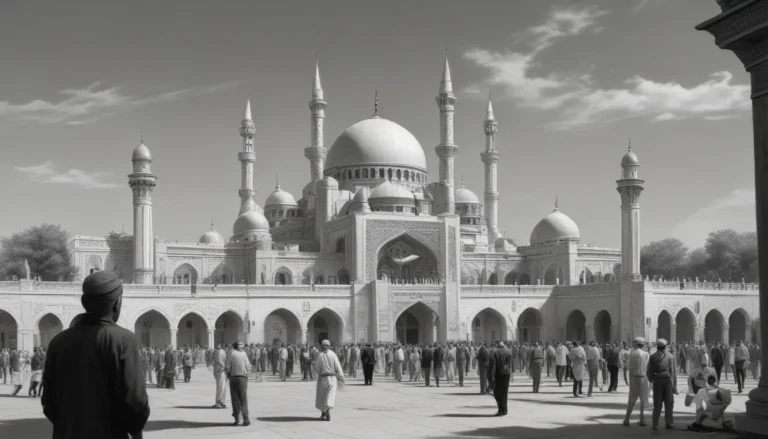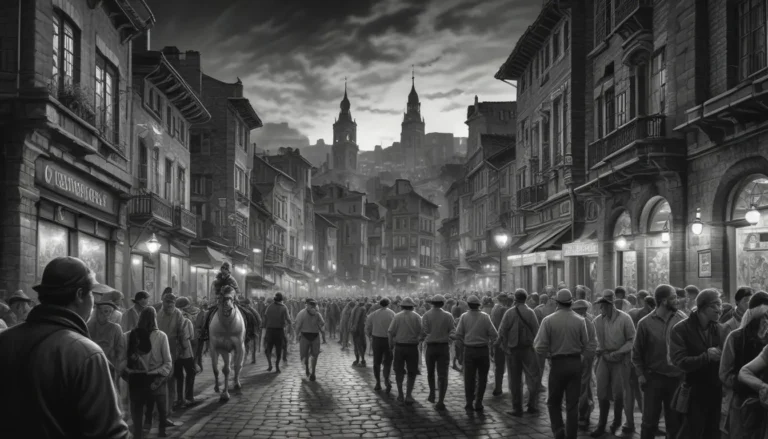The images in our articles are for illustrative purposes only and may not exactly match the content. They are intended to capture your interest and complement the text, not to replace it.
Pittsburgh, Pennsylvania, a city known for its rich history and impressive architectural landmarks, offers a captivating journey through time and design. From the iconic steel bridges that span its three rivers to the grandeur of its historic buildings, Pittsburgh’s architectural heritage is a testament to its vibrant past and present. In this article, we will delve into the fascinating world of Pittsburgh’s most notable architectural landmarks, shedding light on the stories, innovations, and cultural significance behind these iconic structures.
Join us as we uncover 15 intriguing facts about some of Pittsburgh’s architectural gems, from the towering Cathedral of Learning to the vibrant Andy Warhol Museum. Whether you’re a history enthusiast, an architecture buff, or simply curious about the city’s captivating landmarks, this exploration promises to unveil fascinating insights and ignite a newfound appreciation for the architectural wonders that grace the captivating skyline of Pittsburgh, Pennsylvania.
Key Takeaways:
- Pittsburgh’s Rich Cultural Heritage: The city is home to iconic landmarks like the Cathedral of Learning and the Andy Warhol Museum, reflecting its cultural legacy and artistic vibrancy.
- Architectural Evolution: From the historic elegance of the Frick Building to the modern marvel of the U.S. Steel Tower, Pittsburgh’s landmarks showcase the city’s transition from an industrial powerhouse to a hub of cultural and environmental innovation.
The Cathedral of Learning: A Towering Symbol
The Cathedral of Learning, situated on the University of Pittsburgh’s main campus, stands as an iconic architectural landmark in Pittsburgh. This towering structure, at 535 feet tall, is the tallest educational building in the Western Hemisphere. The Cathedral of Learning boasts Gothic Revival architecture and houses classrooms, offices, and the Nationality Rooms, each uniquely designed to represent various cultures from around the world.
The Nationality Rooms: A Cultural Showcase
Within the Cathedral of Learning, the Nationality Rooms embody Pittsburgh’s cultural diversity. With 31 classrooms, each designed to reflect a different nationality, visitors can immerse themselves in authentic decor, furniture, and artwork. From Japan to India to Norway, these rooms offer a fascinating glimpse into global traditions and craftsmanship.
Phipps Conservatory and Botanical Gardens: Nature’s Oasis
Amidst Pittsburgh’s urban landscape lies the Phipps Conservatory and Botanical Gardens, a historic green oasis. This Victorian glasshouse is home to a diverse collection of exotic plants and flowers, offering a serene escape from the city’s hustle and bustle. Phipps’ sustainable architecture and eco-friendly practices align with Pittsburgh’s dedication to environmental conservation.
The Frick Building: Timeless Elegance
Downtown Pittsburgh is graced by the elegant Frick Building, a historic skyscraper that exudes timeless charm. Adorned with intricate terra cotta details, this architectural gem serves as a symbol of the city’s industrial past. Its grandeur and meticulous design continue to captivate visitors, making it a must-see landmark in Pittsburgh.
The Andy Warhol Museum: A Tribute to Pop Art
Located on the North Shore, the Andy Warhol Museum pays homage to Pittsburgh’s own Andy Warhol, a pop art icon. As the largest museum in the U.S. dedicated to a single artist, this architectural marvel houses an extensive collection of Warhol’s works. The museum’s avant-garde design and innovative exhibits reflect Warhol’s boundary-pushing artistic legacy.
The Allegheny County Courthouse: Grand and Stately
Pittsburgh’s majestic Allegheny County Courthouse stands as a testament to the city’s rich history and architectural prowess. With Romanesque Revival style, ornate arches, and towering spires, this courthouse commands attention and evokes grandeur. Its significance in the legal and civic realms makes it a prominent landmark in Pittsburgh.
The Point State Park Fountain: A Symbol of Renewal
At Point State Park, the iconic fountain symbolizes renewal and transformation in Pittsburgh. Situated at the convergence of the city’s three rivers, this architectural marvel features a towering water jet that punctuates the skyline gracefully. The fountain’s strategic location and striking design make it a beloved gathering place for locals and visitors alike.
The Smithfield Street Bridge: A Historic Gem
Spanning the Monongahela River, the historic Smithfield Street Bridge stands as a testament to Pittsburgh’s industrial heritage. Adorned with intricate latticework and ornate iron details, this elegant structure is a timeless marvel. Its strategic location and classic design have solidified its status as an architectural treasure in Pittsburgh.
The U.S. Steel Tower: A Contemporary Icon
A standout in Pittsburgh’s skyline, the U.S. Steel Tower is a modern marvel of architectural innovation. Once the headquarters of U.S. Steel, this sleek skyscraper reflects the city’s transition to modern design and commerce. Its distinctive silhouette and contemporary aesthetic make it a notable landmark in Pittsburgh.
The David L. Lawrence Convention Center: Sustainability in Design
The David L. Lawrence Convention Center showcases Pittsburgh’s commitment to environmental stewardship. This LEED-certified architectural marvel integrates eco-friendly elements, such as a green roof and energy-efficient systems. Its innovative design and environmental initiatives have positioned it as a leading convention center in the U.S.
The Heinz Hall for the Performing Arts: A Cultural Jewel
Steeped in history and architectural splendor, the Heinz Hall for the Performing Arts is a cultural gem in Pittsburgh. This historic concert hall, with its elegant detailing and opulent interiors, is a premier venue for symphonic performances. Its acoustically rich design and captivating ambiance make it a cherished destination for arts enthusiasts.
The Roberto Clemente Bridge: Connecting Communities
Spanning the Allegheny River, the Roberto Clemente Bridge serves as a vital link between Pittsburgh’s North Shore and downtown district. Its vibrant yellow hue and graceful arches add architectural brilliance to the city’s landscape. The bridge’s role in connecting communities and facilitating pedestrian access has made it an integral part of Pittsburgh’s architectural tapestry.
The Allegheny County Jail: A Historical Landmark
With an imposing stone facade and rich heritage, the Allegheny County Jail stands as a historic landmark in Pittsburgh. Designed in the Richardsonian Romanesque style, this architectural marvel reflects the city’s architectural legacy. Its storied past and enduring significance contribute to its status as a notable landmark in Pittsburgh.
The Monongahela Incline: History in Motion
Pittsburgh’s Monongahela Incline offers a blend of history and architectural ingenuity. This funicular railway provides panoramic views while showcasing timeless design and engineering. Connecting hillside neighborhoods to downtown, the incline is a cherished part of Pittsburgh’s architectural landscape.
The Carnegie Museum of Art: A Masterpiece Collection
Nestled in Oakland, the Carnegie Museum of Art is a architectural masterpiece and cultural treasure in Pittsburgh. Housing a diverse collection of artistic works, the museum offers a journey through centuries and continents. Its stately architecture and immersive galleries make it a cornerstone of Pittsburgh’s cultural scene.
In conclusion, Pittsburgh, Pennsylvania, boasts a rich tapestry of architectural marvels that reflect its history and culture. From the iconic landmarks to the historic buildings, each structure tells a unique story of innovation and creativity. Exploring these architectural wonders offers a glimpse into the city’s past, present, and future, showcasing the blend of tradition and modernity. Whether you’re a history buff, an architecture enthusiast, or a curious traveler, Pittsburgh’s architectural landmarks promise an enriching journey through time and design. Explore these gems, and discover the beauty and brilliance that define Pittsburgh’s architectural landscape.






